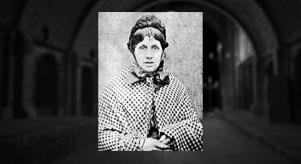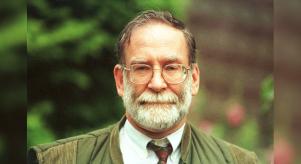
Pontypridd: Crime Profile
Bringing together police interviews, eyewitness testimonies and the heartfelt stories of those whose lives have been shattered by crime, Murdertown is a bold new series exploring the sinister histories of different communities across the UK.
Host Katherine Kelly’s latest stop is Pontypridd, a traditional market town just to the north of Welsh capital Cardiff. It was here, in this ostensibly peaceful place, that a local woman met a grisly fate in 2014. Last captured on CCTV walking home after an ordinary night time, the woman vanished into thin air, and police suspected the worst. They were right. The woman had fallen foul of a killer – a “ruthless sexual predator”, to quote the barrister who put him away – whose sheer bloodlust shocked even hardened investigators, and whose crime seemed to confirm Pontypridd’s dubious distinction of being the alleged “murder capital of Wales”.
The claim that Pontypridd was a hotbed of murder first hit the headlines back in 2010. Locals reacted with understandable unease and bafflement. One local councillor, Mike Powell, seemed resigned to the grim news, saying he was “quite surprised” to know his town had such a high murder rate, but that “at the end of the day the statistics speak for themselves”.
But do they? Despite the apparent empirical truth of statistics – numbers in black and white surely can’t lie, can they? – there’s still plenty of room for ambiguity and confusion when it comes to the reporting of data. And there’s always the possibility of statistics being manipulated to fit a certain narrative or agenda.
There had been 11 murders in a town of just under 30,000 residents.
So what were these statistics, anyway? The original story, that Ponty was the murder capital of Wales, was based on numbers showing the town had endured more killings per capita than any other Welsh community in the preceding half-decade. Specifically, there had been 11 murders in a town of just under 30,000 residents.
It certainly sounded bad, put in those stark terms. And the crimes themselves were often startling. One of them was the killing of Theresa Kelly by her partner Gary Kirkham in 2006. Having already beaten her on several previous occasions, he lashed out at her fatally one day, then bizarrely left her to lie dead on the floor for days, seemingly not comprehending that he’d killed her. He finally called paramedics to say, “My missus has turned black”.
Stories like these, and the “murder capital” headlines, just added to the general sense of pessimism and gloom. Local councillor Mike Powell spoke of the town’s “image problem”, and the fact that elderly people were terrified of being mugged when they went out. Another local official was similarly exasperated by the news, saying “people's perception of violent crime is already higher than it actually is and I wouldn't be surprised if now they are even more afraid to step outdoors”.
Some refused to accept this dark portrayal of their community, however. The most prominent cynic was local MP Owen Smith, who would later run for leadership of the Labour Party. “This isn’t a picture of Pontypridd that I recognise,” he said, slamming the “murder capital” story as a “disgraceful piece of scaremongering and a slur on the good name of Pontypridd.”
As if to prove the old line about “lies, damned lies and statistics”, Smith delved into the figures and laid bare the inconvenient truth behind the headline-baiting revelations. Only three of the 11 murders had actually taken place in Pontypridd itself, with the rest scattered throughout outlying areas. As these areas were under the jurisdiction of the police command centre in Pontypridd, they were recorded – misleadingly – as Pontypridd crimes. As Owen Smith put it, “We’re not the murder capital, we’re absolutely bog standard.”
Of course, the media remains a sucker for such stories – just a couple of years ago, the constituency of Torfaen was the latest place to be proclaimed the murder capital of Wales. Ultimately, journalists will always have tremendous leeway to use raw data as fuel for a sensational story, and – in general terms – the news has long been made to seem worse than it is.
Eminent psychologist and popular science author Steven Pinker has noted that the New York Times, one of the most respected papers in the world, has used increasingly negative language over the past several decades, and that “news outlets in the rest of the world, too, became gloomier and gloomier from the late 1970s to the present day”.
As Pinker says, this can cause “heavy news watchers” to become “miscalibrated” and worry about crime more and more, even as actual rates drop over time. George Gerbner, an academic specialising in the influence of popular media, found that higher TV consumption is correlated with an increased fear of violent crime.
The case of Pontypridd is a glaring example of how perceptions are skewed by media representation of murder – and should be a warning (and a reassurance) about how we regard the world around us.
Watch Murdertown, Mondays at 9pm






